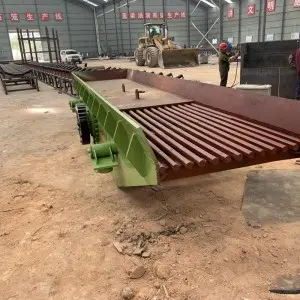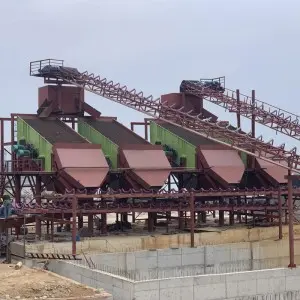In the material handling stage of mining and construction engineering, as the front-end equipment of the crushing production line, the procurement decision of the general-purpose vibrating feeder not only needs to pay attention to the fluctuation pattern of market prices, but also needs to formulate a reasonable strategy in combination with its own production needs. Understanding the driving factors behind the price and mastering the scientific procurement rhythm can ensure the stability of the equipment while optimizing the long-term operating costs.
The core influencing factors of price fluctuations
The cost of raw materials is the fundamental variable that influences prices. The core components of the vibrating feeder, such as the steel trough body, vibrating motor, and spring assembly, are closely linked to the prices of bulk commodities like steel and copper in terms of cost. Data shows that when the price of steel fluctuates by more than 8%, the price of equipment usually adjusts accordingly within three months. In recent years, the instability of the global supply chain has led to the proportion of transportation costs in terminal prices rising from 12% to 18%, and the impact on cross-border procurement is particularly significant.
The phenomenon of price stratification brought about by technological iteration is becoming increasingly obvious. The price of traditional mechanical vibrating feeders is relatively stable, while the new type of equipment integrated with frequency conversion control and intelligent monitoring systems is 20% to 30% higher in price due to the increase in manufacturing costs. This price difference is not merely an accumulation of costs, but rather reflects the long-term advantages of the equipment in terms of energy consumption (energy savings can reach 15%) and maintenance costs (fault early warning reduces downtime).
Seasonal fluctuations in market demand form predictable price cycles. The second and third quarters of each year are the peak season for engineering construction. Equipment demand is released in a concentrated manner. The delivery cycle of suppliers is extended to 45 to 60 days, and prices will increase by 5% to 8%. After entering the fourth quarter, as project progress slows down and procurement demand declines, some suppliers will offer inventory clearance discounts. At this time, prices are often at the lowest level of the year.

Practical strategies for optimizing procurement
Establishing a price monitoring mechanism is more effective than simply pursuing low prices. By tracking industry indices, changes in quotations from mainstream suppliers, and in combination with the market conditions of raw materials, the turning point of prices can be roughly predicted. Data shows that initiating procurement during a downward price cycle can save an average of 11% in costs compared to purchasing during peak seasons. However, it should be noted that waiting too long for the lowest price may miss the project schedule. A reasonable approach is to set a psychological price range rather than an absolute low price.
Select the appropriate model based on the usage scenario of the equipment. Although the general-purpose type has wide applicability, for the working conditions of specific materials (such as wet and sticky materials, large pieces of ore), choosing models with special designs (such as anti-clogging devices, adjustable amplitude) can reduce the failure rate by more than 30% although the initial investment increases. Before purchasing, a detailed calculation should be made of the material characteristics, processing capacity requirements and the matching degree of equipment parameters to avoid hidden costs caused by improper selection.
Pay attention to the impact of the after-sales service network on procurement decisions. The replacement frequency of the vulnerable parts of the vibrating feeder (such as wear-resistant liners and vibrating bearings) is relatively high. Whether the supplier can provide timely spare parts supply directly affects the utilization rate of the equipment. Give priority to brands that have service outlets in the project location. Even if the purchase price is slightly higher, the overall cost can be reduced by shortening the maintenance cycle. Statistics show that a complete after-sales support system can increase the effective operation rate of equipment to over 90%.
Adopt a model that combines bulk purchasing with phased delivery. For purchasers with long-term demands, signing an annual framework agreement at one time to lock in the price and then delivering the goods in batches based on actual needs can not only avoid the risk of price increases but also reduce inventory pressure. This model is particularly suitable for adoption during the upward cycle of raw material prices. Data shows that it can reduce the fluctuation of procurement costs by 15% to 20%.
The procurement of general-purpose vibrating feeders is essentially a process of balancing short-term investment with long-term returns. Understanding the industrial logic behind the price trend and formulating flexible strategies in line with one’s own production rhythm can not only optimize procurement costs but also ensure the continuity of the production line through the stable operation of equipment. In the current context where competition in the mining and construction industries is becoming increasingly fierce, this refined procurement management is becoming an important link to enhance operational efficiency.

Post time: Oct-13-2025
